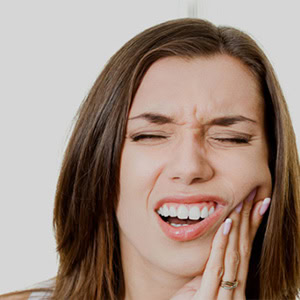Dental Emergency During The Lockdown
Call us on 0208 616 0590 or email us at [email protected] to book an appointment.




Dental Emergency
For those of us who have experienced a dental emergency, we know how painful and frightening it can be. During these unprecedented times, it’s easy to overlook our dental health. It’s important that any dental issues, if they arise, are managed quickly and in the right way. This will help minimise the risk of serious issues arising at a later stage. At Whites Dental, our dentists are available to help you identify, understand and address any dental emergencies that may arise during the lock down.
How do you know you have a dental emergency?
Some of us may experience oral aches and pains while at home during the lock down. Many of these can likely be addressed at home ourselves. However, for more serious dental issues it’s important you obtain professional dental advice.If you are experiencing dental issues, but don’t know whether your symptoms constitute a dental emergency, ask yourself the following question:
Are you experiencing any of the following –
1. A tooth pain that’s getting worse despite following self-help advice.
2. Swelling to your cheek, face or gum which is spreading with time. Is the swelling starting to spread along the floor of the mouth, down your neck or to your eyes?
3. Pain that is causing you to not sleep well at night or is preventing you from concentrating?
4. A mouth ulcer that hasn’t healed after two weeks.
5. If you have recently had your tooth extracted and it’s bleeding for more than 20 minutes, despite biting down hard onto a soft gauze or cloth.
6. A cracked or broken tooth that is causing you pain and damage to your tongue or cheeks, despite taking self-help advice.
7. A loose tooth or a partially / completely knocked-out tooth
8. Bleeding due to facial trauma such as a knock to the face or mouth
If you are experiencing any of the above symptoms, it’s important you contact your dentist as quickly as you can. At Whites Dental, we will arrange for one of our dentists to give you a call to discuss your symptoms and provide advice on next steps.
We have also provided below guidance on what symptoms would generally not constitute a dental emergency and can initially be treated at home with some self-help advice over the phone from your dentist –
- A minor tooth pain that comes and then goes or causes you a dull aching pain.
- Sensitivity in your teeth.
- Bleeding or sensitive gums.
- Sharp pain when you bite down.
- A mouth ulcer that’s been present for less than a week / 10 days.
- Pain in a wisdom tooth that’s not associated with a swelling or restricted opening of your mouth.
- A chipped tooth.
- A loose crown or veneer. Or a crown that’s come off.
- Orthodontic braces or wire related issues.
- Denture discomfort.
Tips to manage dental issues at home
It’s important we all follow some basic guidelines for maintaining good oral and dental hygiene at home during the lock down (see advice on how to maintain good oral health at home here. However, sometimes dental issues can arise. Our dentists have provided guidance on how to manage dental issues at home, till such time you are unable to see a dentist –
1. Toothache – A toothache is often a result of infection or decay in the tooth. Clean and floss the area to remove any food debris that might be irritating the tissue locally. Maintain good oral hygiene by brushing and flossing twice a day. Use fluoride toothpaste while brushing. Reduce your intake of sugary foods to prevent the decay from getting worse. If the pain remains, take over the counter painkillers (preferably paracetamol) regularly to manage the pain. Once you are able to, book an appointment with your dentist. If the pain is intense (above 5 out of 10) you should call your dentist or call 111, who will do a triage over the phone and guide you to an urgent dental care unit.
2. Bleeding or swollen gums–bleeding gums are very common in adults and are usually a sign of gum disease. Gums bleed as a result of poor oral hygiene, which leads to a condition called gingivitis. Make an extra effort to clean your teeth and gums daily – brush and floss your teeth and gums twice a day; spending more time on the areas that are bleeding. Use inter dental brushes to clean in between your teeth. Inter dental brushes are available at Boots or your local chemist. Antiseptic mouth wash can help as well – you will need to ask your local chemist if they can provide you with one. Maintain this routine till you can see your dentist. You may need regular cleaning with a hygienist to remove plaque and improve your oral hygiene and treat gum disease. Antibiotics may sometimes need to be prescribed as well if the infection is severe. If you have gum disease, several sessions with the dentist may be required to treat it and help save your teeth.
3. Broken filling or exposed cavity – if a filling has come loose or if you have developed a cavity in any of your teeth, you may be able to fill the cavity with a temporary filling material. You can buy a temporary filling kit from Boots or a local chemist. Keeping a cavity exposed for long durations is not advisable as this can increase the chances of further decay.
4. Sensitive teeth – Teeth can become sensitive due to a number of reasons, including receding gums, tooth decay or the presence of large fillings in the teeth. Sensitivity can also be sometimes induced by consumption of acidic drinks and foods/fruits. Avoid sweet and acidic drinks or anything hot or cold. Sensitivity can be managed by use of sensitivity specific toothpaste (Colgate Sensitivity Pro-relief or Sensodyne Rapid Relief). Place the toothpaste on the sensitive teeth and leave it on overnight. Use a night-guard on top if you have one. In addition, maintain good oral hygiene daily and reduce intake of sugary food and drinks to prevent sensitivity or decay from getting any worse.
5. Lose crown or bridge(or if they have come off): You may be able to sometimes re-cement the lose crown or bridge yourself at home. Buy a temporary dental kit from Boots or your local chemist or Amazon. The kit will include material to help glue the crown or bright back for a short duration of time. The kit should also include materials to temporarily fill the resulting hole. Apply the temporary material in the gap, bite down while it’s still soft to enable the material to adapt to the shape of your bite and then let it set. See your dentist when you are able to do so.
6. Cracked or chipped tooth – a cracked tooth typically needs urgent dental care. If you are in pain, call your dentist who will be able to advise you how to find a local urgent dental care centre local to you. If you have only chipped a tooth, you may be able to manage that from home yourself. A tooth can chip sometimes due to excessive grinding at night, especially if you are stressed. If the chipped tooth has a sharp or pointy edge, use a clean nail file to gentle smoothen the tooth to prevent it irritating surrounding tissue.
7. Wisdom teeth pain – A wisdom tooth pain usually manifests itself as a dull aching pain, but it can also be sharp on occasion. Cleaning the area can help relieve the pain. Use warm salt water to disinfecting the area; you can simply bathe the tooth in warm salty water. Next clean the gums surrounding the wisdom tooth. Use a long-handled inter dental brush to clean the area, especially the gaps between your back teeth. You can buy interdental brushes from Boots, a local pharmacy or a supermarket. If the pain is severe and is affecting your ability to even open your mouth wide, you need to call your dentist for advice. The dentist may need to prescribe antibiotics to address the issue.
8. Ulcers–Clean the area with warm saltwater to prevent infection. Buy an ulcer gel (such as Bonjela) to help reduce the pain, particularly before having your meals. Maintain good dental hygiene to keep the area clear. You can also take over-the-counter painkillers if needed.
9. Broken orthodontic wires or brackets – If your orthodontic brackets or wire have come off or become lose, the sharp edges can irritate and damage your surrounding cheeks and gums. You may be able to reinsert the wire or smoothen sharp edges yourself using a pair of tweezers, nail clippers and nail file. Speak to your orthodontist over the phone on how to fix the orthodontic hardware before you do anything yourself. Eat soft foods at home to prevent further damage to the remaining braces and wire.
At Whites Dental, we are here to support you with dental emergencies during the lock down. If you need advice on any dental related issue, send us a quick email and we will arrange for you to speak to one of our dentists over the phone.



